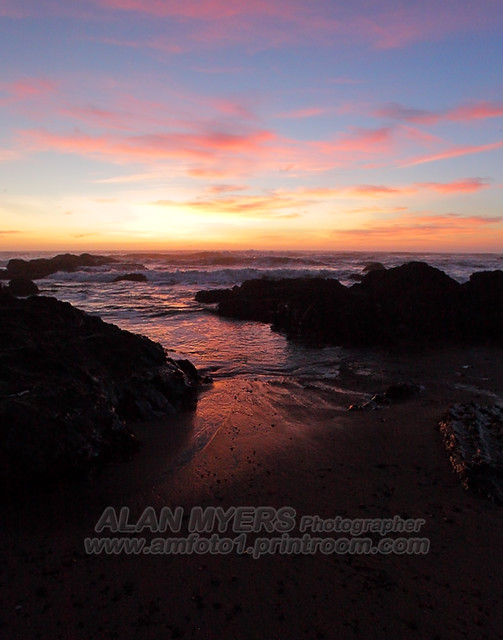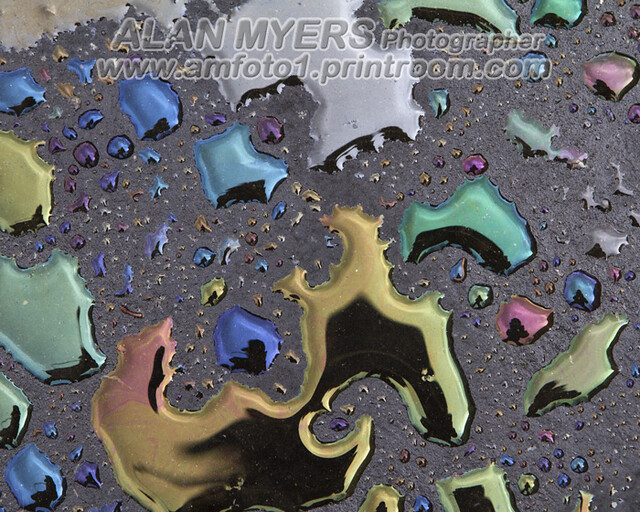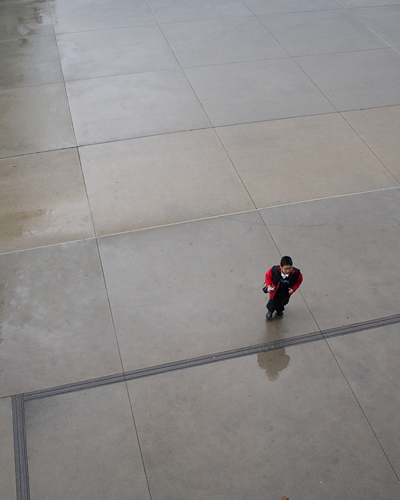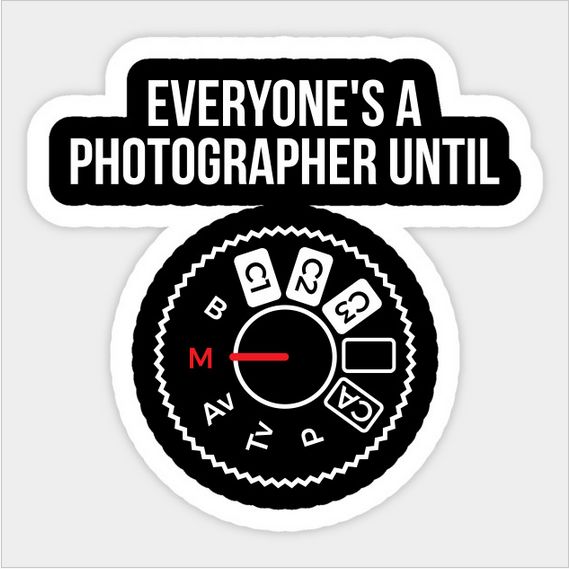ND filter VS Polarizing filter
Jun 21, 2019 13:47:32 #
jm76237 wrote:
I am looking into ND filters and polarizing filters and am confused. When do you use one over the other? Both seem to be used when you have too much light. Maybe a very basic question but I need a simple explanation.
Thanks in advance.
Thanks in advance.
No, each do have its own purpose and that's what folks using them for. The COP cut's reflections and adds saturation to colors and that is the main purpose that people use it for. As a side "effect" it cuts some of the light as well, but most folks compensate for it! The ND filter does cuts light for its main purpose, making it possible to shoot with a larger aperture and/or longer shutter speeds, and that's what folks chose the ND's for!
Jun 21, 2019 13:52:59 #
photoam wrote:
OK. So I have a CPL on my camera. How do I know what ‘direction’ it is?
Don't overthink. You don't ever know"what direction it is" (a vague and overly general term). Just put it on the lens, and twist it around till you get the best picture.
But beware, a polarizer, circular or not, can affect both AF and AE. Depends on your camera.
Jun 21, 2019 13:56:43 #
amfoto1
Loc: San Jose, Calif. USA
photoam wrote:
OK. So I have a CPL on my camera. How do I know what ‘direction’ it is?
You know what direction you're pointing your camera... A C-Pol will be the most effective when the direction you are shooting is 90 degrees from the light source.
For example, in this case the sun was almost directly above and slightly behind me, almost perfectly 90 degrees from the direction I was pointing the camera to take the shot. In fact, I dialed back the filter's effect a little because I didn't want to "lose" all the reflections off the water.:

For the shot below, I deliberately didn't use any filter at all... A C-Pol, in particular, would have done nothing to improve the shot because the sun was straight ahead ("0 degrees"). In fact, any filter is likely to add flare and possibly other "issues", when a strong light source is in the image, such as a sunset or sunrise shot. A C-Pol is a multi-layer filter (as is a Variable ND), making it even more likely to cause problems. Same lens as used above, but this time without any filter:

Another reason I didn't use a C-Pol for the above is because the reflections off the wet sand, wet rocks and water are an important part of the image and I didn't want to reduce those in any way, as a C-Pol might have done. Also don't use a C-Pol when photographing a rainbow... The filter is likely to make it disappear!
The shot below shows how a C-Pol can give uneven effects. The same wide angle lens was used, as for both the above shots... but in this case the sun was off to the left and only slightly out of the image area. You can see how the effect of the filter on the plain blue sky is weaker on the left where it's less than 90 degrees from the sun... and stronger towards the right, approaching closer to a 90 degree angle from the sun. This uneven effect can be a problem at times... But not always. Here I saw it happening in the viewfinder and decided to use it. Removing the filter would have resulted in a more plain, even sky (which was sort of boring, IMO):

For digital, a C-Pol is the most widely helpful type of filter. it's useful for much more than just deepening the blue of the sky in a scenic shot. In fact, on an overcast day foliage will reflect a lot of glare that mutes colors and reduces contrast. A C-Pol can help a lot boosting color saturation:

But, there are also times NOT to use one. For the following a C-Pol would have ruined the shots, IMO...
Oil and water reflections:

With a C-Pol filter, the side-lit web would have largely disappeared:

Wet pavement reflections would have been pretty much eliminated by a C-Pol:

Any filter needs to be used selectively and purposefully. While a C-Pol is one of the most useful of all and can improve a lot of images, there are plenty of times not to use one, too!
Jun 21, 2019 14:15:38 #
Bill P wrote:
Don't overthink. You don't ever know"what direction it is" (a vague and overly general term). Just put it on the lens, and twist it around till you get the best picture.
But beware, a polarizer, circular or not, can affect both AF and AE. Depends on your camera.
But beware, a polarizer, circular or not, can affect both AF and AE. Depends on your camera.
The better brands say they add another layer after polarizing to send the light evenly to the lens, so not affecting exposure or focus. Another reason to buy quality I guess, but $100 is not unusual to pay.
Jun 21, 2019 17:10:55 #
Kozan
Loc: Trenton Tennessee
jm76237 wrote:
I am looking into ND filters and polarizing filters and am confused. When do you use one over the other? Both seem to be used when you have too much light. Maybe a very basic question but I need a simple explanation.
Thanks in advance.
Thanks in advance.
A polarizing filter is only good for about 1.5 to 2 stops of light. You can get ND filters up to about 18 or 20 stops.
I once used my solar eclipse filter (16 2/3 stops) for a long exposure. I had to show a very heavily traveled intersection with no cars. How do you do that without showing the cars? You take about a 20 minute exposure. The cars become invisible.
You can't do that with a polarizing filter. I think the polarizing filter is only good for 2-3 seconds.
Anyway, that's my story, and I'm sticking to it.
Kozan
Jun 21, 2019 19:23:06 #
There you have it. An excellent, lucid, and understandable reply. 
--Bob

--Bob
Longshadow wrote:
ND filters are used when you have too much light, or when you want to reduce the light to get a longer exposure, like for water falls or blur/smooth out water. They do not reduce glare.
Polarizers are used to cut reflections like on rocks, water and windows. A polarizer will reduce the amount of light a sensor/film receives by design, but reducing light is not the primary function, reducing glare is
Polarizers are used to cut reflections like on rocks, water and windows. A polarizer will reduce the amount of light a sensor/film receives by design, but reducing light is not the primary function, reducing glare is
Jun 23, 2019 04:23:03 #
catchlight..
Loc: Wisconsin USA- Halden Norway
Not only 90 degrees...
for glare on water or hard surfaces it is more like angle to the sensor. A perfect 90 will give the best blue sky for sure...
for glare on water or hard surfaces it is more like angle to the sensor. A perfect 90 will give the best blue sky for sure...
Jun 23, 2019 04:32:18 #
catchlight..
Loc: Wisconsin USA- Halden Norway
By adjusting you can change where the Cplr affects the image, and the degree of affect. This is not a screw on and shoot filter. It takes skill and experience to teach yourself how to use it.
People who know how to use one will swear by it, and those who expected miracles without knowing the first thing about the effects, or how to make the adjustments, will hate them and recommend not to use them ...
People who know how to use one will swear by it, and those who expected miracles without knowing the first thing about the effects, or how to make the adjustments, will hate them and recommend not to use them ...
Jun 23, 2019 08:39:33 #
catchlight.. wrote:
Not only 90 degrees...
for glare on water or hard surfaces it is more like angle to the sensor. A perfect 90 will give the best blue sky for sure...
for glare on water or hard surfaces it is more like angle to the sensor. A perfect 90 will give the best blue sky for sure...
I see what you mean about water and hard surfaces. The trick of shooting the sun with forefinger and thumb still works, though, one just has to twist the wrist to point the thumb down, and the thumb still points at the direct reflections.
Jun 23, 2019 14:50:20 #
catchlight.. wrote:
By adjusting you can change where the Cplr affects the image, and the degree of affect. This is not a screw on and shoot filter. It takes skill and experience to teach yourself how to use it.
People who know how to use one will swear by it, and those who expected miracles without knowing the first thing about the effects, or how to make the adjustments, will hate them and recommend not to use them ...
People who know how to use one will swear by it, and those who expected miracles without knowing the first thing about the effects, or how to make the adjustments, will hate them and recommend not to use them ...
This is the greatest example of exp[sing what's wrong with photography today than anything I'v ever read. Photography is a skill. Thanks to camera company advertising agencies copywriters many still believe that digital cameras remove all the work from the photographer and replace it with electronic magic. And in today's society too many want things for nothing.
Here's the bad news: to become a fine photographer takes learning and practice, no amount of digital magic can replace that. I'm not saying you need to go to school and get a BFA, many of us got where we are by another process that is vanishing from our society: reading books.
Jun 23, 2019 15:38:22 #
Your statement leads us to this.
--Bob
[quote=Bill P]This is the greatest example of exp[sing what's wrong with photography today than anything I'v ever read. Photography is a skill. Thanks to camera company advertising agencies copywriters many still believe that digital cameras remove all the work from the photographer and replace it with electronic magic. And in today's society too many want things for nothing.
Here's the bad news: to become a fine photographer takes learning and practice, no amount of digital magic can replace that. I'm not saying you need to go to school and get a BFA, many of us got where we are by another process that is vanishing from our society: reading books.[/quote]
--Bob
[quote=Bill P]This is the greatest example of exp[sing what's wrong with photography today than anything I'v ever read. Photography is a skill. Thanks to camera company advertising agencies copywriters many still believe that digital cameras remove all the work from the photographer and replace it with electronic magic. And in today's society too many want things for nothing.
Here's the bad news: to become a fine photographer takes learning and practice, no amount of digital magic can replace that. I'm not saying you need to go to school and get a BFA, many of us got where we are by another process that is vanishing from our society: reading books.[/quote]
If you want to reply, then register here. Registration is free and your account is created instantly, so you can post right away.

